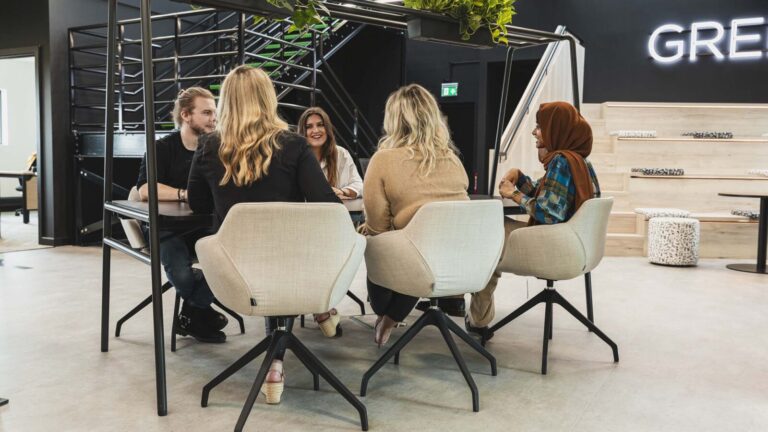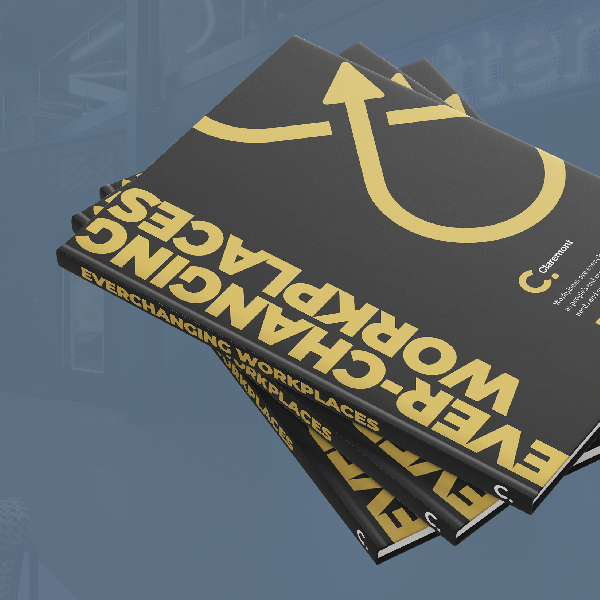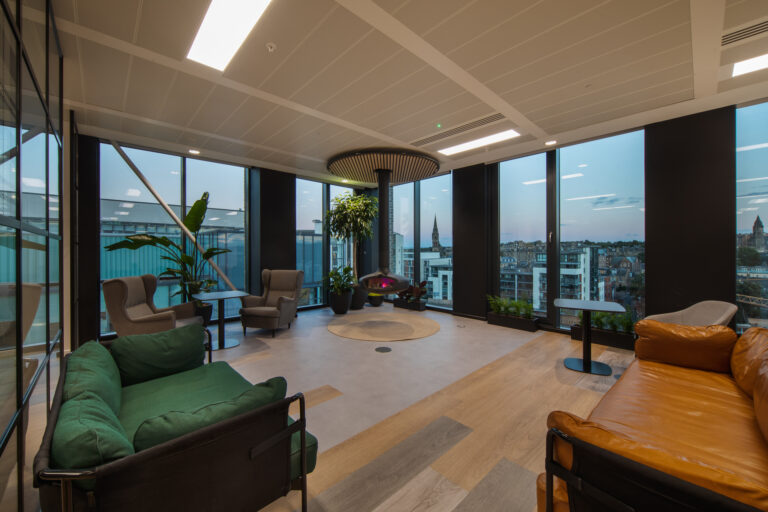
9 Diversity and Inclusion in the workplace statistics that show improvement is needed
Date
8 November 2023
Read length
3 min
Universally, we are having more open conversations about previously taboo subjects, such as menopause, neurodiversity, mobility impediments, mental health, personality traits and more. As a result, the employee experience is starting to be viewed through the lens of Diversity, Inclusion, Belongingness, and Equity (DIBE).
While it’s hugely positive that DIBE has come to the fore and organisations are working fast to educate themselves about it, we can’t ignore just how dire the collective starting point is. As these diversity and inclusion in the workplace statistics demonstrate, the world’s current position still leaves much to be desired.
- Only 9% of FTSE 100 CEOs are women, and 15% of UK boards still have no female executives[1].
- Only 6%[2] of top management positions are held by a person of ethnic minority.
- The employment rate of disabled people is 53.7%[3], compared with 82.7% for those who are not.
- As much as 20% of the world’s population is neurodiverse[4].
- 65%[5] of neurodivergent employees fear discrimination from management.
- Autism, dyslexia and ADHD are among the most common neurodiverse conditions and those most likely to be among your workforce.
- Approximately 700,000 people[6] in the UK are diagnosed with autism, but of all the disabled groups, they are least likely to be in employment[7].
- There are 16 million disabled people in the UK[8], which is approximately 1 in 4 people. While most building regulations focus on physical access for wheelchair users, only 8%[9] use a wheelchair.
- A quarter of women consider leaving the workforce due to menopause – 10% do[10].
So, what do these diversity and inclusion in the workplace statistics tell us?
These statistics show that a proper understanding of difference is required to make society, organisations and their workplaces inclusive. These facts also highlight how society and the workplace have traditionally been weighted to the needs of white, non-disabled and neurotypical men. As such, it shouldn’t be surprising that diversity and inclusion at work are topical and vital issues, especially for employee-centric organisations.
The disability statistic shows how shallow our collective understanding has been. If only 8% of disabled people use a wheelchair, why is disabled access so typically framed in these terms? What about ensuring a broader range of disabilities
are catered for, perhaps with signage that’s easy to read or available in brail, providing mental health support at work or creating environments that support those with neurodivergent needs.
If one in every five people are neurodiverse, employers should be doing more to help them thrive, especially as they are widely recognised for being highly creative thinking, adept at problem-solving and with an exacting eye for detail – all hugely valuable business traits. This should include offering personal support required to carry out work tasks and providing access to the right environment, such as quiet spaces with fewer stimuli.
Women account for half of the population – but until recently, industry was losing accomplished and experienced staff because employers didn’t understand or cater for those experiencing menopause. Yet some simple changes to workplace culture and office interior design could make all the difference.
Looking ahead: how to promote equality & diversity at work
Becky said: “Imagine if all these groups were made to feel acknowledged, understood and supported through workplace environments. Think of the talent pool that would be unlocked for UK businesses and the widespread benefits this would bring to society. One of the key ways to do this is by creating positive and diverse work environments that equip everyone with the tools and resources they need to thrive.”
With greater awareness and understanding of DIBE comes a more informed and intentional approach to workplace design. However, catering for diversity doesn’t mean one thing has to work for everyone – but instead, there is plenty of choice so that everyone can find a way to participate. This is how to create positive employee experiences for all.
Here are three simple ways office interior design can cater for diversity and inclusion:
1.Catering for neurodiversity
One of the most significant areas to focus on is considering stimulation sensitivity. Neurodivergence can include extremities of sensitivity to stimulation. When planning a workplace, we need to ensure there are spaces of sensitivity sanctuary, which are hyper-minimal spaces that offer visual and audio privacy at their core. If space allows, differentiating quiet work settings such as a booth for focused work and wellness or retreat spaces will ensure colleagues can access the supportive environment they need anytime. Ensuring there are predictably quiet workplace zones also helps to limit distractions.
2. Designing for menopause
While much of an organisation’s response to menopause needs to focus on creating a culture of understanding and support, inclusive office design also has a role. This should include creating quiet and private spaces where those struggling with symptoms can retreat, allowing employees greater control over their work settings’ temperature, encouraging access to the outdoors and wellbeing spaces, and offering mental health and mindfulness support.
3. Putting inclusivity front and centre
Diverse workspaces don’t just make people feel seen, heard, and understood; they also bring people together to create a sense of community, as this is how they will forge meaningful connections. This can be achieved by offering a variety of areas such as on-site cafes, breakout areas, wellbeing spaces, training zones and even town hall spaces – which are ideal for department or company-wide gatherings. If your workplace doesn’t have these features, it could be time to read up on the Destination Office and think about how office refurbishment could support your DIBE goals.
Paddy said: “DIBE is one of the most significant factors shaping the future of the workplace and, crucially, how organisations approach employee recruitment, engagement and retention, and improve employee experience as a whole. Employers yet to embrace DIBE should do so quickly, as there are rich rewards, including improved productivity, wellbeing and profitability. It’s also how we will make individual people’s lives and society better for everyone.”
To learn more about Claremont’s approach to DIBE and the other trends shaping office interior design as we move into 2024, download a copy of our latest Insight Report here.
References:
- [1] Data from the European gender diversity barometer compiled by Ethics & Boards as quoted here: https://boardagenda.com/2023/03/09/less-than-a-third-of-ftse-100-executives-are-women/
- [2] Data taken from the British Academy of Management’s ‘Delivering Diversity Research Advisory Board Report’ (2017) https://www.managers.org.uk/wp-content/uploads/2020/03/CMI_BAM_Delivering_Diversity_2017_Executive_Summary_Website_Copy.pdf
- [3] Figures taken from the Office of National Statistics Labor Force Survey as quoted by the House of Commons’ Disabled People in Employment statistics: https://commonslibrary.parliament.uk/research-briefings/cbp-7540/#:~:text=5.15%20million%20working%2Dage%20disabled,are%20not%20disabled%20was%2082.7%25.
- [4] Data from: Doyle N. Neurodiversity at work: A biopsychosocial model and the impact on working adults. Br Med Bull; 2020. doi: 10.1093/bmb/ldaa021.
- [5] According to data from Birkbeck’s Research Centre for Neurodiversity at Work as quoted here: https://www.bbk.ac.uk/news/neurodivergent-employees-fear-discrimination-despite-uk-businesses-promoting-neurodiverse-workplaces#:~:text=The%20researchers%20identified%20stark%20barriers,both%20sides%20of%20the%20coin.
- [6] According to British Medical Association data as quoted here: https://www.bma.org.uk/what-we-do/population-health/improving-the-health-of-specific-groups/autism-spectrum-disorder
- [7] Data from Autistica as quoted here: https://www.autistica.org.uk/news/autistic-people-highest-unemployment-rates#:~:text=A%20new%20report%20released%20today,autistic%20people%20are%20in%20employment.
- [8] According to the Department for Work and Pensions’ Family Resources Surveyas quoted here: https://commonslibrary.parliament.uk/research-briefings/cbp-9602/#:~:text=How%20many%20people%20have%20a,24%25%20of%20the%20total%20population.
- [9] Based on figures from Wheelchair Travel Pro which say there are 1.2million wheelchair users in the UK – as quoted here: https://wheelchairtravelpro.com/how-many-wheelchair-users-in-uk/#:~:text=For%20many%20of%20us%2C%20moving,estimated%201.2%20million%20wheelchair%20users.
- [10] Data from Health and Her menopause consultants, as quoted here: https://hrreview.co.uk/hr-news/10-of-women-leave-the-workforce-due-to-menopause/142016#:~:text=According%20to%20research%20by%20menopause,one%20in%20four%20consider%20leaving.
See how we could help with your new office interior design or office design and build project here
Get in touch
We love nothing better than talking all things workplace and design – got a question, potential project or just need some guidance?
Drop us a note…





